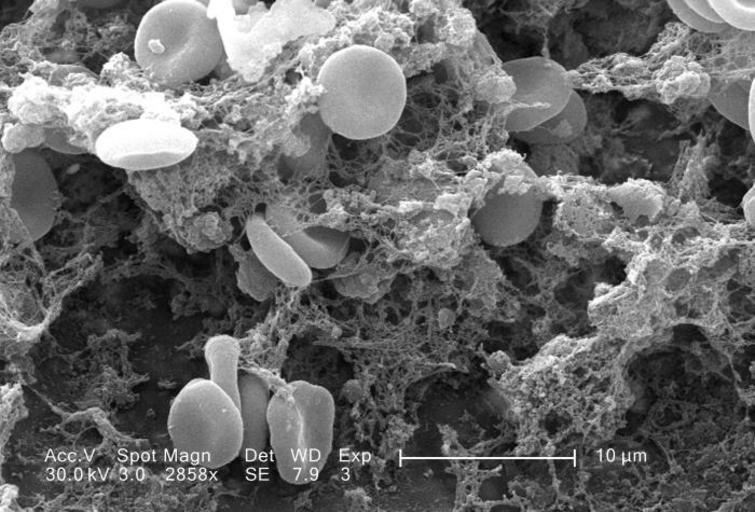MAKE A MEME
View Large Image

| View Original: | Blood clot in scanning electron microscopy.jpg (700x475) | |||
| Download: | Original | Medium | Small | Thumb |
| Courtesy of: | commons.wikimedia.org | More Like This | ||
| Keywords: Blood clot in scanning electron microscopy.jpg en This scanning electron micrograph SEM depicted a number of red blood cells found enmeshed in a fibrinous matrix on the luminal surface of an indwelling vascular catheter; Magnified 2858x Note the biconcave cytomorphologic shape of each erythrocyte which increases the surface area of these hemoglobin-filled cells thereby promoting a greater degree of gas exchange which is their primary function in an in vivo setting In their adult phase these cells possess no nucleus What appears to be irregularly-shaped chunks of debris are actually fibrin clumps which when inside the living organism functions as a key component in the process of blood clot formation acting to entrap the red blood cells in a mesh-like latticework of proteinaceous strands thereby stabilizing and strengthening the clot in much the same way as rebar acts to strengthen and reinforce cement 2005 http //phil cdc gov/phil/details asp Janice Carr other versions Custom license marker 2015 05 13 http //phil cdc gov/phil/details asp Janice Carr Uploaded with UploadWizard Scanning electron microscope | ||||